The political algorithm of 21st February
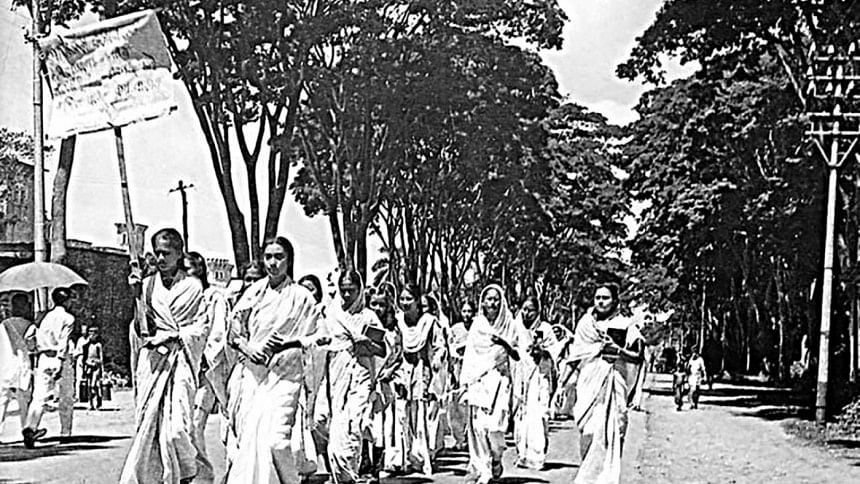
Understanding the political setting of the Language Movement and 21st February requires an examination of how religion played very different roles before and after the 1947 Partition in East Bengal.
In British India, colonial subjects, both Hindus and Muslims, fought a common foe: the British colonial power. Yet, since the 19th century, the political and social status of the Hindus and Muslims differed significantly. Within the colonial bureaucracy, the Hindus were in a much more advantageous position than the Muslims. Among other reasons for the decline of Muslims in colonial India were the repressive agrarian systems since the Permanent Settlement of 1793 that negatively affected Muslim petty landowners and peasants and the replacement of Persian with English as the court language in 1837. Governor-General of India William Bentinck's act "displaced most of the Muslim professionals from traditional judicial service." The Muslims either shunned or were slow to embrace the new system of education, while the Hindus zealously learned English, solidifying their position within the colonial administration.
The immediate outcome of these differing paths was the "monopolisation of new employment opportunities" by the Hindus, while Muslims lagged far behind. In the context of the growing material success of the Hindus, the Muslims became self-conscious of their backwardness and, consequently, began to emphasise the separateness of their economic and political interests. A communal schism between the Hindus and Muslims began to calcify since, at least, the mid-19th century. In 1905, Viceroy Curzon's inchoate Partition of Bengal was designed to create two Bengals, West Bengal for Hindu Bengalis and East Bengal for Muslim Bengalis. Even though the Partition of Bengal was annulled in 1911 because of widespread Hindu protests, the brewing Hindu-Muslim antagonism eventually created the ideological foundation for the Partition of 1947.
But, after the Partition, the political mood changed rapidly in East Pakistan, from Islamic nationalism or the pursuit of a separate homeland for Muslim Bengalis to a path of secular Bengali nationalism. "Whereas the pre-1947 nationalism was cloaked under the religious and/or communal surplice, the post-1947 nationalism was entirely secular." Disillusionment with the idea of Pakistan as a country in which all Muslims—irrespective of their ethnicities—would enjoy equal access to political power and economic opportunities gradually set in. The Bengali Muslims' excitement about economic emancipation under the statehood of Pakistan soon proved to be a pipedream.
Despite representing 54 percent of Pakistan's total population, East Pakistan had very little influence on the political decision-making process. The vacuum created by departing Hindus in East Pakistan's administration was soon filled by the Punjabi- and Urdu-speaking Muslim elites from Uttar Pradesh and other parts of India. For many Bengali observers, "the creation of Pakistan symbolised for the Bengali Muslims a change of masters only and not the mode of domination and exploitation." Peter Bertocci elaborated on the background of this state of affairs and noted that "differences of language and culture between Bengalis and the ethnic groups of West Pakistan became accentuated in the context of the growing regional inequities characteristic of Pakistan's political economy."
The language factor pushed the thorniest wedge between the Bengalis and the ruling class of West Pakistan. The vast majority of East Pakistanis spoke Bengali, while only a fraction of West Pakistanis spoke Urdu. However, the Urdu-speaking political oligarchy dominated the politics of West Pakistan. Muhammad Ali Jinnah, the founder and Governor-General of Pakistan, announced the following, while addressing the Dhaka University Special Convocation on March 24, 1948: "There can be only one state language. If the component parts of this state are to march forward in unison, that language, in my opinion, can only be Urdu." Such flagrant denial of the complexity of Pakistan's intricate ethnic and linguistic composition predictably ignited a nationalist passion among the Bengalis. Realising that the prevailing economic and political disparities between the two wings of Pakistan would not go away anytime soon, many Bengalis called into question the religion-based political vision that drove the creation of Pakistan. Many felt compelled to search for cultural, social, and linguistic roots that made them Bengali.
Acclaimed Bengali educator and philologist Muhammad Shahidullah sought to celebrate, albeit with a tinge of essentialism, his concept of Bengaliness at the first Bengali literary conference of East Bengal, held in Dhaka, on December 31, 1948: "It is true that there are Hindus and Muslims. But what is transcending is that they are in essence Bengali. This is a reality. Nature with her own hand has stamped the indelible mark of Bengali in such a manner on our appearance and language that it is no longer possible to conceal it." Bengali activist-historian Badruddin Umar called the prevailing Bengali sentiment a "homecoming of Bengali Muslims." What Umar meant was that the Bengali Muslims finally realised the political fallacy of creating a pan-Muslim country, ignoring the robust complexity of the roles that religion, culture, tradition, and language play in forming ethnic identities.
While not rejecting the importance of the Islamic faith in the Bengali Muslim character, some intellectuals endeavoured to explain the syncretic nature of Bengali Islam, influenced by many organic factors of pre-Islamic folk values. Many secular-minded Bengali Muslims disputed the argument that a faith that originated in the Arabian Peninsula could remain pure as it travelled across geographical and cultural boundaries. They deemed that a pan-Islamic ideology—buttressed by the imposition of Urdu as the state language—able to cohere the ethnically divergent peoples of Pakistan was a doomed political position from the beginning. Their point of contention was to understand how faith blends with local cultural forms, values, and practices.
In The Islamic Syncretistic Tradition in Bengal (1983), Asim Roy cogently demonstrated how medieval Muslim mystics converted Bengali Muslims by fusing the Islamic faith with native myths and cosmologies. Far from being a corruption of the faith, Bengal's syncretic Islam provided a rich tapestry of cultural amalgamation. As Rafiuddin Ahmed stated: "As in many other Muslim societies, Islam in Bengal has taken many forms and has assimilated values and symbols not always in conformity with Qur'anic ideals and precepts. The cultural idioms of Islam underwent rapid transformations here, giving birth to a set of popular beliefs and practices, which, in essence, represented the popular culture of rural Bengal rooted in the pre-Islamic past….Islam in Bengal has not been able to escape the influences of local culture: The Bengali Muslims have remained Bengalis."
The ordinary Bengali Muslims' psychological predicament of opposing allegiances—to local culture and to an uncompromised interpretation of faith—would magnify in favour of indigenous roots of Bengali Islam after the Partition, when their disillusionment with Pakistan's promise of a safe haven for all Muslims became widespread. The coexistence of contradictory values explains "why the same region could support movements first for Pakistan, and then for Bangladesh." It is in this post-Partition shifting context that the Language Movement had sown the seeds of wider Bengali agitation for political and economic emancipation.
Adnan Zillur Morshed, PhD, is an architect, architectural historian, urbanist, and columnist. He teaches at the Catholic University of America in Washington, DC, and serves as Executive Director of the Centre for Inclusive Architecture and Urbanism at BRAC University. This essay has been excerpted from his article, "Modernism as Post-Nationalist Politics: Muzharul Islam's Faculty of Fine Arts (1953–56)," published in the Journal of the Society of Architectural Historians (2017).
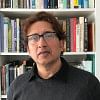


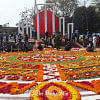

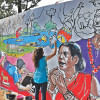



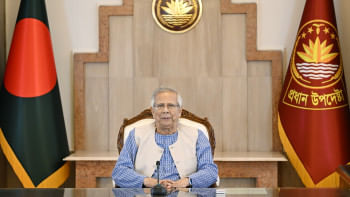
Comments